
How to Use KY-003 Hall Effect Sensor: Examples, Pinouts, and Specs
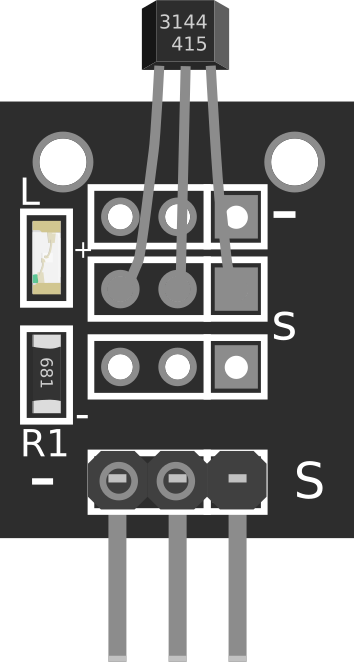
 Design with KY-003 Hall Effect Sensor in Cirkit Designer
Design with KY-003 Hall Effect Sensor in Cirkit DesignerIntroduction
The KY-003 Hall Effect Sensor is a compact and versatile device designed to detect the presence of a magnetic field. It operates by utilizing the Hall effect principle, which generates a voltage when a magnetic field is applied perpendicular to the sensor's surface. The sensor outputs a digital signal, making it easy to interface with microcontrollers and other digital systems.
Explore Projects Built with KY-003 Hall Effect Sensor
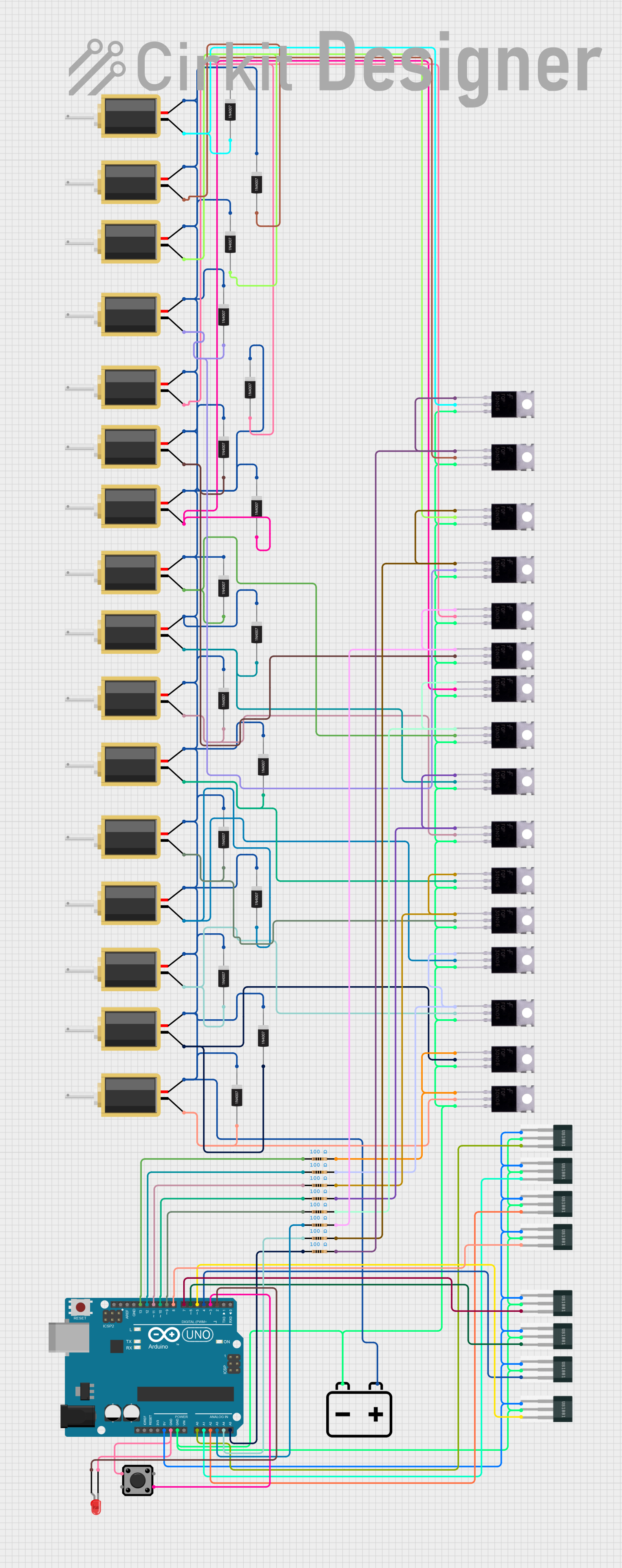
 Open Project in Cirkit Designer
Open Project in Cirkit Designer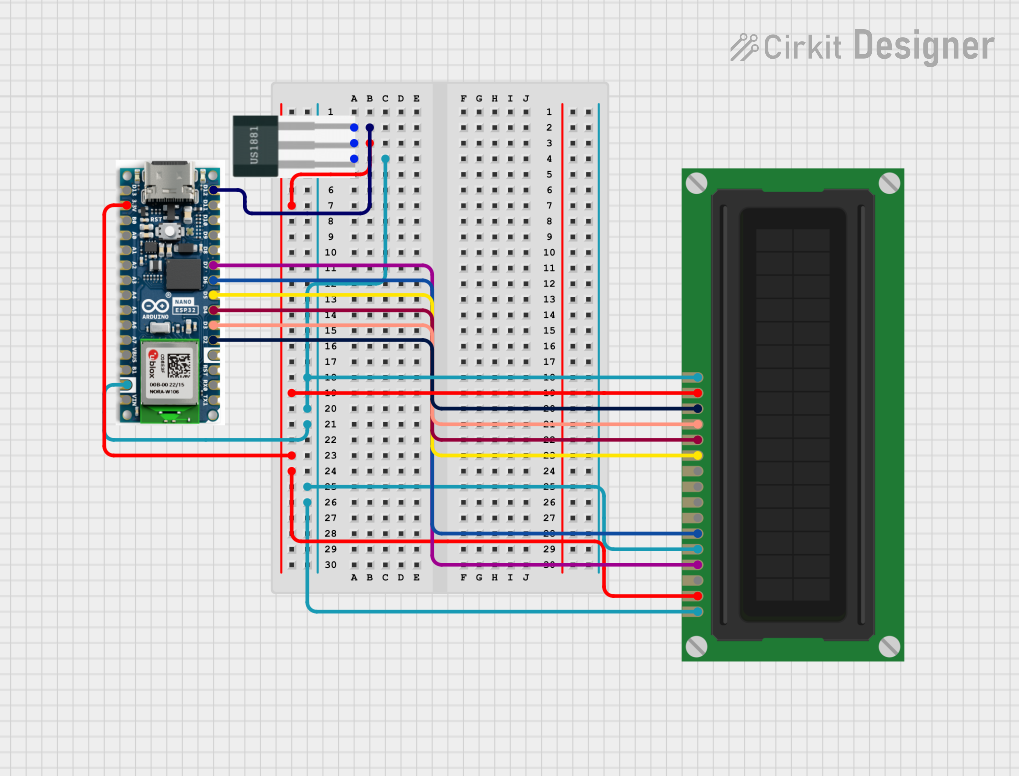
 Open Project in Cirkit Designer
Open Project in Cirkit Designer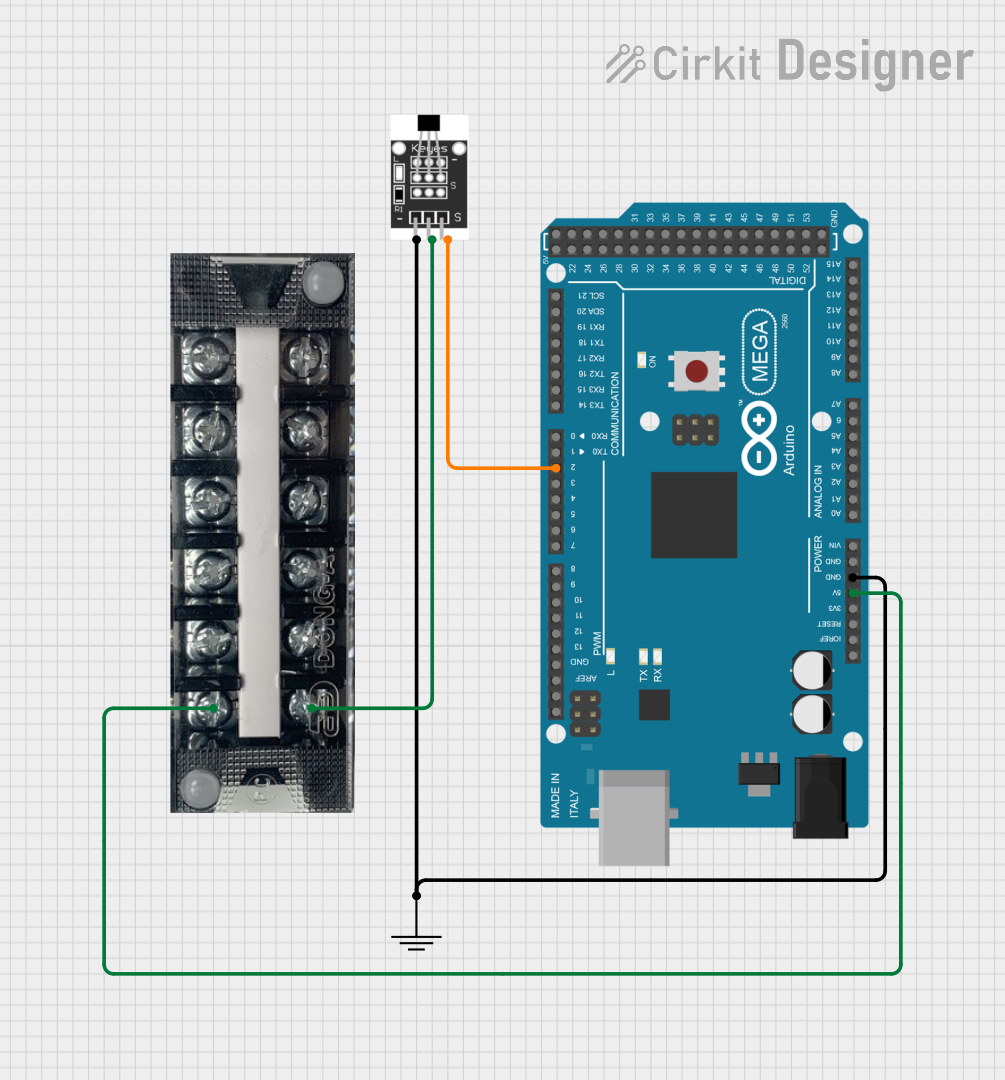
 Open Project in Cirkit Designer
Open Project in Cirkit Designer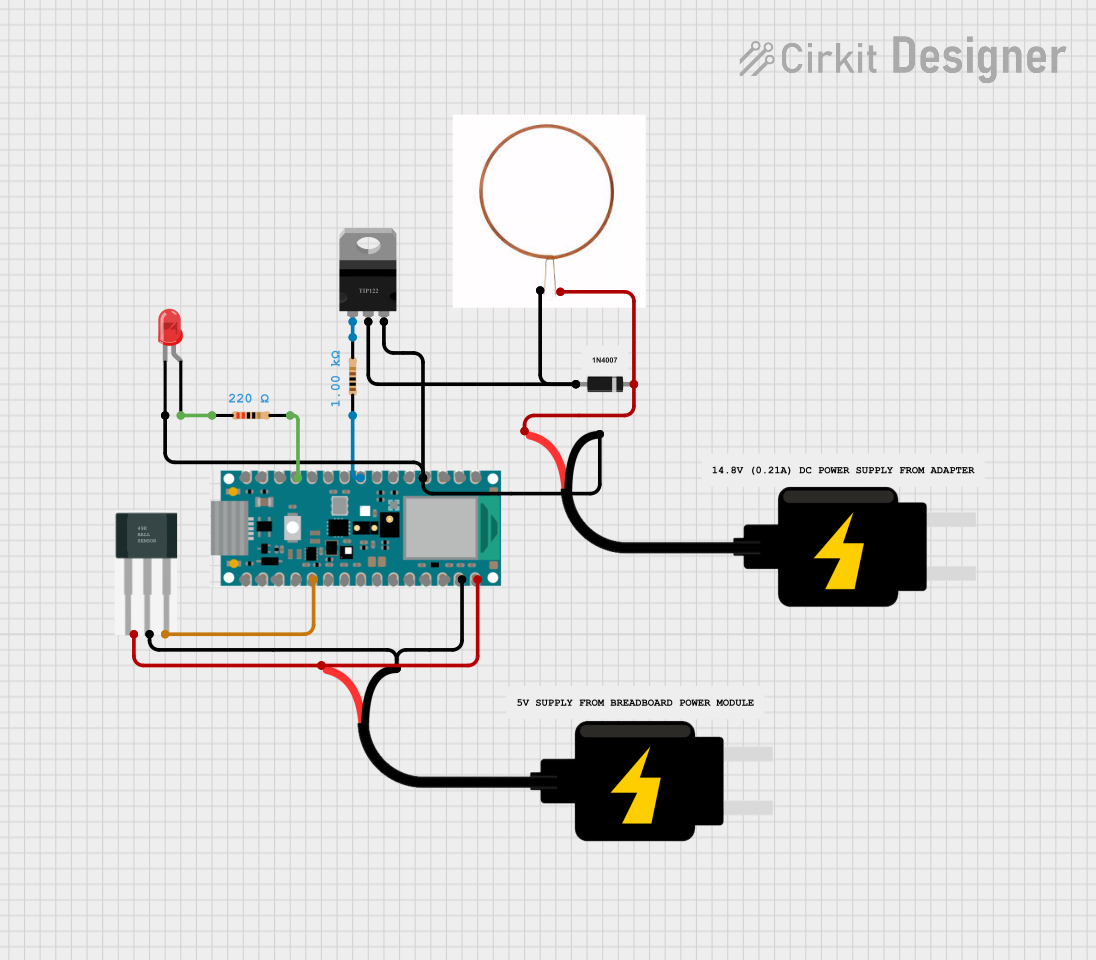
 Open Project in Cirkit Designer
Open Project in Cirkit DesignerExplore Projects Built with KY-003 Hall Effect Sensor

 Open Project in Cirkit Designer
Open Project in Cirkit Designer
 Open Project in Cirkit Designer
Open Project in Cirkit Designer
 Open Project in Cirkit Designer
Open Project in Cirkit Designer
 Open Project in Cirkit Designer
Open Project in Cirkit DesignerCommon Applications and Use Cases
- Proximity sensing (e.g., detecting the presence of a magnet)
- Speed detection in rotating systems (e.g., motor speed monitoring)
- Position sensing in robotics and automation
- Magnetic field detection in security systems
- Contactless switches and encoders
Technical Specifications
The KY-003 Hall Effect Sensor module is built around the 3144E Hall Effect sensor and includes additional components for easy integration into electronic projects.
Key Technical Details
- Operating Voltage: 3.3V to 5V DC
- Output Type: Digital (High/Low)
- Output Voltage Levels:
- High: VCC (when no magnetic field is detected)
- Low: 0V (when a magnetic field is detected)
- Current Consumption: ~4mA
- Magnetic Polarity Sensitivity: Detects the South pole of a magnet
- Operating Temperature Range: -40°C to 85°C
- Dimensions: 18.5mm x 15mm x 7mm (approx.)
Pin Configuration and Descriptions
The KY-003 module has three pins for easy connection:
| Pin Number | Pin Name | Description |
|---|---|---|
| 1 | Signal | Digital output signal (High/Low) |
| 2 | VCC | Power supply input (3.3V to 5V DC) |
| 3 | GND | Ground connection |
Usage Instructions
The KY-003 Hall Effect Sensor is straightforward to use in electronic circuits. Follow the steps below to integrate it into your project:
Connecting the KY-003 to a Circuit
- Power the Sensor:
- Connect the
VCCpin to a 3.3V or 5V power source. - Connect the
GNDpin to the ground of your circuit.
- Connect the
- Read the Output Signal:
- Connect the
Signalpin to a digital input pin on your microcontroller or logic circuit. - When a magnetic field (South pole) is detected, the
Signalpin will output a LOW signal (0V). Otherwise, it will output a HIGH signal (VCC).
- Connect the
Important Considerations and Best Practices
- Magnet Orientation: The KY-003 is sensitive to the South pole of a magnet. Ensure the correct orientation of the magnet for proper detection.
- Debouncing: If the sensor is used in a high-speed application, consider implementing software or hardware debouncing to avoid false triggers.
- Power Supply: Use a stable power supply to ensure reliable operation. Avoid voltage fluctuations that could affect the sensor's performance.
- Distance Sensitivity: The detection range depends on the strength of the magnetic field. Stronger magnets can be detected from a greater distance.
Example: Using KY-003 with Arduino UNO
Below is an example of how to use the KY-003 Hall Effect Sensor with an Arduino UNO to detect a magnetic field:
// KY-003 Hall Effect Sensor Example with Arduino UNO
// Connect KY-003 Signal pin to Arduino digital pin 2
// Connect KY-003 VCC pin to Arduino 5V
// Connect KY-003 GND pin to Arduino GND
const int hallSensorPin = 2; // Digital pin connected to KY-003 Signal pin
const int ledPin = 13; // Built-in LED pin on Arduino
void setup() {
pinMode(hallSensorPin, INPUT); // Set hallSensorPin as input
pinMode(ledPin, OUTPUT); // Set ledPin as output
Serial.begin(9600); // Initialize serial communication
}
void loop() {
int sensorState = digitalRead(hallSensorPin); // Read the sensor state
if (sensorState == LOW) {
// Magnetic field detected
digitalWrite(ledPin, HIGH); // Turn on LED
Serial.println("Magnetic field detected!");
} else {
// No magnetic field detected
digitalWrite(ledPin, LOW); // Turn off LED
Serial.println("No magnetic field detected.");
}
delay(100); // Small delay for stability
}
Troubleshooting and FAQs
Common Issues and Solutions
Sensor Not Detecting Magnetic Field:
- Ensure the magnet's South pole is facing the sensor.
- Verify the connections (VCC, GND, and Signal) are correct.
- Check the power supply voltage (3.3V to 5V DC).
False Triggers or Unstable Output:
- Use a stable power source to avoid voltage fluctuations.
- Add a pull-up resistor to the Signal pin if necessary.
- Implement software debouncing in your code.
No Output Signal:
- Confirm the sensor is powered correctly.
- Test the sensor with a strong magnet to ensure it is functional.
FAQs
Q: Can the KY-003 detect both poles of a magnet?
A: No, the KY-003 is designed to detect only the South pole of a magnet.
Q: What is the maximum detection range of the KY-003?
A: The detection range depends on the strength of the magnetic field. Stronger magnets can be detected from a greater distance, typically up to a few centimeters.
Q: Can I use the KY-003 with a 3.3V microcontroller?
A: Yes, the KY-003 operates within a voltage range of 3.3V to 5V, making it compatible with 3.3V microcontrollers like the ESP32 or Raspberry Pi Pico.
Q: Is the KY-003 suitable for high-speed applications?
A: Yes, but you may need to implement debouncing techniques to ensure accurate readings in high-speed environments.